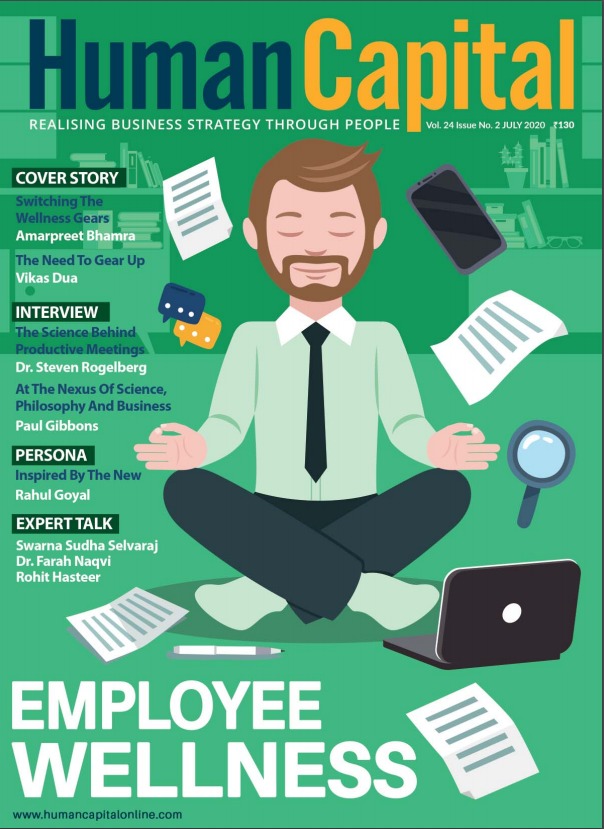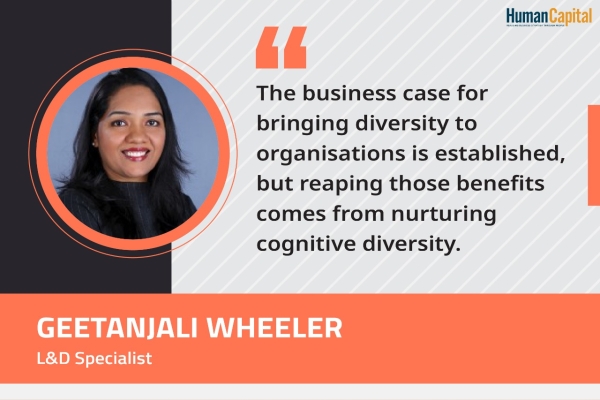Implementing Learning interventions is never easy, but good preparation, more often than not, helps achieve the intended learning outcomes.
Often, Learning departments do not merely jostle by implementing a programme or two. Quite often, ticket programme launches that require several months of advanced planning. The L&D department in a large MNC in India was tasked with creating an elaborate Learning intervention for a sister business’s Fast Track employees. This business was based in the Middle East and the programme would involve the Fast Trackers travelling to India, Manila and East Europe to undergo this programme. The programme would comprise not just a few key modules, but addresses by select members of the India business leadership team, psychometric assessments and debrief, meeting with domain experts with HR and Learning personnel handholding them through the entire programme. And to boot, the programme would be a paid opportunity, so the India business would actually earn additional revenue for designing and implementing this programme. L&D departments, typically far removed from revenue opportunities, could not fathom the quantum of their happiness at the prospect of earning.
Readying for the Run
In the past articles, we had discussed the importance of doing a good Training Needs Analysis, of designing well and then delivering with expertise. Well, that is truly the groundwork for good programme implementation too. The Training Needs Analysis allows the Programme Managers to understand the skill gaps that exist and what the stakeholders want the programme to contain. Both these expectations need to be well blended.
Pilot Practice
Large scale implementations are challenging, not just logistically, but also due to the risk of mistakes, overruns and scope creep. Hence, it is advisable that before we go in for full-fledged implementation, would prove to be hugely beneficial. While digital learning has this baked-in in its development process with rapid prototyping and Alpha launches, the same does not hold for classroom Training. Hence, approximate ways to reduce risks and take pre-emptive measures before a full-scale launch are a must-do.
Key Lookouts
Some of the key aspects we need to be on the lookout for have been listed. First and foremost, get the stakeholders on your side. They should believe in the programme and recognise the value it brings. Remember, they generally control the purse strings and not having them on board would derail the show, and, conversely, their support will ensure the smooth running of the Programme.
“The stakeholders generally control the purse strings and not having them on board would derail the show, and, conversely, their support will ensure the smooth running of the Programme.”
The next set of participants in the programme who need to be aligned are the Trainers themselves. The Train the Trainer programme and the subsequent certification are a key Quality Control measure and pregnant with consequences, if not done well. Remember, the Trainers will carry the value of the Programme on their shoulders. They are the anchors of the programme, both in terms of domain knowledge, and being the ambassadors of the programme. A single misstep on their part may prove to be one too many. Hence, they need to be certified for domain knowledge and, side by side, calibrated to the vision, imbued with the values and aligned to the end goals of the programme. Anything less will result in slippages which could be put the programme at considerable risk.
Next, the programme needs to be socialised. Organisations should know about its existence, the value it brings to the table and benefits it promises, not just to the narrow circle of participants, but to the organisation as a whole. Here, the intent needs to be to generate awareness, but also an aspirational value associated with the programme. That in turn ensures the transformation of reluctant participants into enthusiastic learners. Also, not just for one batch, this programme then becomes a fixed lodestar for achievers in the organisation.
It is one thing to create aspiration for a programme, quite another to prep the participants. They are both the customers and recipients of the programme. Their buy-in is critical and linked to the key adult learning principle of what is in it for them. They need to know upfront that which is expected of them. How they will benefit. Logistically, they need to know the time it will consume, the travel it will involve. Actually, a dedicated Orientation Programme for them would go a long way. This sensitisation upfront helps not just in planning, but develops a broader acceptance, even a sense of anticipation and helps to obviate last minute surprises and the lack of preparedness.
“The Trainers carry the value of the Programme on their shoulders. They are the anchors of the programme, both in terms of domain knowledge, and being the ambassadors of the programme.”
Going Granular
As they say, the devil is in the details. And the details have a devilish propensity to derail well laid out plans. Hence, it is advisable to take a Project Management approach to the execution of the Programme. What is meant by the Project Management approach is that we develop a robust plan with timelines and responsibilities for each deliverable and understand the interrelationship between the deliverables. From the high-level communications to planning the logistics, it needs to be seamless. Coming down to the most granular is how we ensure the Training Rooms are set up, amenities provided and how learning friendly they are. It goes without saying that optimal AV arrangements, flipcharts, whiteboards, preferably a cluster or horseshoe sitting arrangement, enables learning to flow smoothly. Unfortunately, due to poor infrastructure, it is very common to witness a reverse Pareto, where a huge adverse impact on learning happens due to the smallest logistical lacunae or problems with physical outlay.
Such programmes rarely begin or end in the classroom. There are pre-work studies to be done and post-work to be followed up with. Both are important for the initiation and internalisation of the key learning flowing from the programme. Following up on postlearning activities is a tough task, as most participants, once out of the Training room, get lost in the day-to-day Operations and lose the sense of urgency which may have been there in the Training room.
A long story short
Coming back to our original story. Endless hours went into planning and when our participants landed from the Middle East, most of them coming to India for the first time, Murphy’s law could have played truant. However, the advance planning paid off. The participants learned well, enjoyed the sights and sounds of India, during the weekends, and left satisfied enough to give very positive feedback, which resulted in this programme becoming an annual feature and part of the Individual Development Path for the Fast Trackers.
.png)
Are you comfortable working with dispersed colleagues?
Trending
-
SBI General Insurance Launches Digital Health Campaign
-
CredR Rolls Out 'Life Happens' Leave For Its Employees
-
Meesho Announces 30-Week Gender-Neutral Parental Leave Policy
-
Microsoft Unveils Tech Resilience Curriculum To Foster An Inclusive Future
-
60% Indian Professionals Looking For Job Change Due To COVID: Survey
-
SpringPeople And Siemens Collaborate For Digital Transformation Push
-
86% Professionals Believe Hybrid Work Is Essential For Work Life Balance: Report
-
Almost 1 In Every 3 People's Personal Life Affected Due To Work Stress
-
Meesho Rolls Out Reset And Recharge Policy For Employees
-
80% Of Talent Leaders & Academics Say Pandemic Changed Skill Needs For Youth: Report
-
Hero Electric Rolls Out 'Hero Care' Program For Employees
-
Human Capital In Collaboration With ASSOCHAM Hosts Virtual Conference
-
IKEA India, Tata STRIVE Collaborate To Create Employability And Entrepreneurship Opportunities
-
SAP India, Microsoft Launch Tech Skilling Program for Young Women
-
DXC Technology, NASSCOM Collaborate For Employability Skills Program
-
Lenskart To Hire Over 2000 Employees Across India By 2022
-
Mindtree Launches Learn-and-Earn Program
-
Tata AIA Extends 'Raksha Ka Teeka' To Its Employees
-
Swadesh Behera Is The New CPO Of Titan
-
NetConnect Global Plans To Recruit 5000 Tech Professionals In India
-
Hubhopper Plans To Hire 60% Of Indian Podcasters By 2022
-
Corporate India Needs More Women In Leadership Roles: Report
-
Aon to Invest $30 Million and Create 10,000 Apprenticeships by 2030
-
Tech Mahindra Launches ‘Gift a Career’ Initiative for Upskilling of Youth
-
40% Women Prefer Flexible Working Options in Post-COVID World: Survey
-
3 out of 4 companies believe they can effectively hire employees virtually: Report
-
Vodafone , CGI and NASSCOM Foundation launch digital skills platform
-
Odisha: Bank, postal employees to deliver cash for elderly, differently-abled persons
-
Skill India launches AI-based digital platform for "Skilled Workforce"
-
Hiring activity declines 6.73% in first quarter: Survey
-
70% startups impacted by COVID-19 pandemic
-
Bajaj Allianz Life ropes in Santanu Banerjee as CHRO
-
Over 70 Percent MSMEs look at cutting jobs to sustain businesses
-
93 Per Cent employees stressed about returning to office post-lockdown
-
Johnson & Johnson India announces family benefits for same gender partners
-
Indian firms turning friendly towards working mothers
-
Welspun India names Rajendra Mehta as new CHRO
-
Wipro partners with NASSCOM to launch Future Skills platform



Human Capital is niche media organisation for HR and Corporate. Our aim is to create an outstanding user experience for all our clients, readers, employers and employees through inspiring, industry-leading content pieces in the form of case studies, analysis, expert reports, authored articles and blogs. We cover topics such as talent acquisition, learning and development, diversity and inclusion, leadership, compensation, recruitment and many more.
Subscribe Now












































Comment